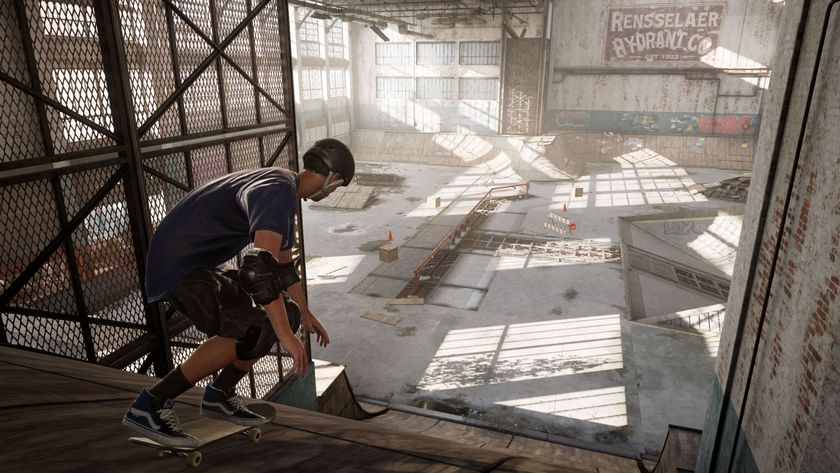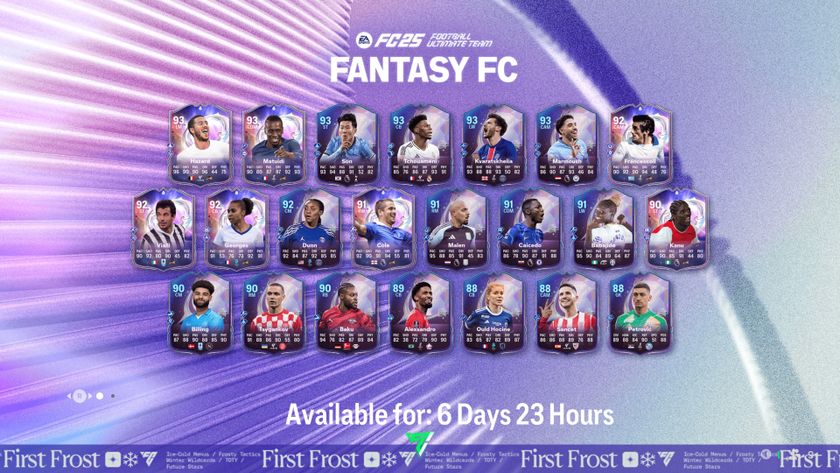FIFA 21 Career Mode guide to pick the right club, scout the best players and improve your youth team
Master development, scouting and transfers with our FIFA 21 Career Mode guide
FIFA 21 Career Mode: Selling players

At its most basic, making a transfer in FIFA 21 is simple. Here, we have received a transfer offer for one of our players. On the right we can see how much we can expect to sell the player for, and that the offer falls within this range. If you just want to sell the player, press A/X to show actions, then click Accept Offer. If you want to sell players quickly, that is all there is to it.
FIFA 21 Career Mode: Negotiating transfers
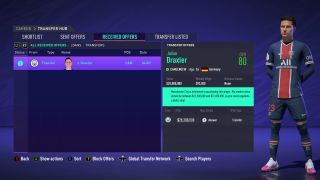
It is best to scout a player first before making a transfer bid, as you have a better idea of what to offer. You can move for a player before you finish scouting if you are on a tight deadline, but it's not recommended because you are going in blind.
Your scouts suggest players for you. Go to the Transfers tab, then click the large scouted players box in the top left. Select a player, then ask your scout to take a look at them. Alternatively, you can find players with the Search Players option. You will get an email once the report is ready (the time it takes depends on the quality of your scout).
View the player when the report is complete, then click Shortlist & View in Transfer Hub. In the Transfer Hub, press A/X to view actions. On the right you can see your scout's advice on how much to bid for the player.
Click Approach to buy if you want to handle the negotiations yourself. Here you have a few options:
- Offer Transfer Fee. As the name suggests, this will let you choose a flat fee to pay for the player. Use your scout’s advice here – on their scouting report, they indicate roughly how much you will need to bid.
- Player Swap. If you are low on funds and want to offload a player from your squad, this option can kill two birds with one stone. If you offer a player swap, you can lower the transfer fee, saving yourself money. When selecting a player, check their value to give yourself a rough idea of how much they will be worth in negotiations.
- Add Sell-On Clause. Once you have decided how much (or who) you want to offer, you can add a sell-on clause to sweeten the deal. If you add one of these, the team you are buying the player from receives some additional funds if you sell him again in the future.
The other team's negotiator may come back with a counteroffer. If they do, you can accept their proposal or make some amendments. For example, if the other team suggests a player-plus-cash deal, you can change the player who will be included in the deal, adjust the cash amount, or remove the additional player altogether.
Once you have negotiated a transfer fee, it is time to agree on a contract with the player. From the Transfer Hub on the Transfers tab, click the player. Under Player Negotiation, click Negotiate. Here you will have a series of choices to make:
- Player role. This ranges from Prospect (the lowest role) to Crucial (the highest). Make sure you choose an appropriate role – attempting to relegate a high-quality player to a role of little importance will not go down well at the negotiating table.
- Contract length. This ranges from one year to five. A longer contract is preferable because other teams will have to wait longer before attempting to poach your player for free when their contract runs out. It also signals to other teams that your player is important to your team, and that they might have to offer a higher transfer fee to pry him away.
- Release clause. This is an important one. If you can, remove it from the negotiations. Other clubs can bypass you completely and go straight to negotiations with the player if they pay his release clause, which prevents you from agreeing a potentially higher transfer fee or a lucrative sell-on clause. With no release clause, clubs must go through you when they want to buy a player.
- Wages and signing-on fee. If your wage budget is tight, you can try lowering the wages in exchange for a slightly higher signing-on fee (which will come out of your transfer budget).
FIFA 21 Career Mode: Loaning players

Loaning a player works similarly to a contract offer in a purchase negotiation. You can choose a simple loan, or a loan-to-buy deal where you loan the player and pay for him at the end of the season.
If you go down the regular loan route, you can choose to take the player on a short-term loan or a season-long loan. If you do not want to pay for the loan player's wages in full, you can split the costs with his parent club, anywhere along a scale from 0% to 100%.
As for loan-to-buy, once the preliminary negotiations are over (loan length and wage split), you can set a future fee for the player. Again, use your scout's suggestions here. Once the other side is happy, you can move on to negotiating the player's terms.
FIFA 21 Career Mode: Assistant responsibilities
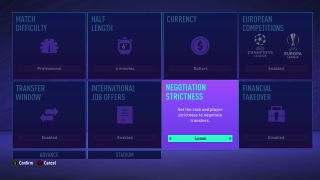
The alternative to doing these negotiations yourself is to hand them off to your assistant manager. This is a useful tool if you are short on time or just don't feel like taking control yourself.
First, select the player in the Transfer Hub, then click Delegate to buy. You can now choose an upper and lower amount you want your assistant to bid. By default, this will be populated by the amounts your scout suggested in their player report (if you have no report, the entries will be blank). Press A/X to set your assistant to work. It takes about six days for them to come back with an agreed transfer offer, which you will be notified about via email.
When this is done, go to the Transfer Hub and click on the player. Here, you can accept the offer your assistant agreed, reject it, or negotiate it if you think you can get a better deal. Once you are happy with the fee, click Accept Offer.
You can now delegate the contract negotiations to your assistant. Once again, you can set an upper and lower limit to the player's wage, although you cannot set any limits on signing-on fees and the like. This stage of the negotiations should take around three days to complete. As with the transfer fee, you can accept the agreement your assistant and the player came to, reject it, or negotiate it. Once you accept the offer, the player will join your club.
FIFA 21 Career Mode: General transfer tips
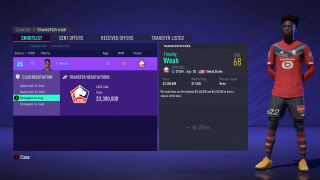
This year, you can define the transfer strictness when setting up your career. There are two options – Loose and Strict – which define how patient other clubs and players are when negotiating transfer fees and contracts. This cannot be changed once you have started the career.
If you keep getting offers for a player you do not want to sell, select them in the Squad Hub, then click Block Offers. Note that this does not stop clubs from bidding if your player has a release clause, so it might be worth renegotiating his contract to remove that if you are concerned.
Finally, it is worth remembering that you can make transfer offers at any point in the season, not just in the transfer window. Once the negotiations are finished, the player will join you when the window opens. That means you should always be on the lookout for potential signings to make sure you get there first ahead of your rivals.
Current page: FIFA 21 career mode guide: transfers
Prev Page FIFA 21 career mode guide: scouting Next Page FIFA 21 career mode guide: best teamsSign up to the 12DOVE Newsletter
Weekly digests, tales from the communities you love, and more

Alex Blake is a freelance writer, who has written extensively for TechRadar, T3, Digital Camera, Digital Trends, CreativeBloq, MacFormat, and GamesRadar. He's a huge FIFA fan and loves FIFA career mode so much so that he runs a site devoted to it at FIFAscoutingtips.com.
